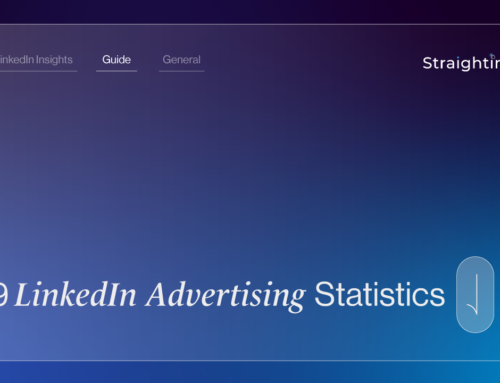Here are 11 extremely useful statistics about LinkedIn that I think you will find useful if you want to get more leads from your LinkedIn activity. That’s the reason we all use LinkedIn, right? Well, that, and networking with important people in the industry to make getting jobs easier in the future.
But, if you are in a job role at the moment – and definitely if you are in sales, or indeed run your own business that needs social networking to survive – then here are my favourite stats about Linkedin to help guide you into producing the right kind of content to get you noticed.
#1 LinkedIn Delivers 277% More Leads Than Twitter and Facebook
Hubspot conducted a study that found that in comparison to Facebook and Twitter, on which both platforms have less than a 0.8% visitor-to-lead conversion rate, LinkedIn generated an average lead conversion rate somewhere around 2.7%.
#2 InMail messages have a 10-25% response rate
Response rates from InMail (the in-built LinkedIn messenger for non-free accounts) have response rates that are over 250% more than typical email response rates (according to LinkedIn themselves). In a world of spam filling our inboxes, LinkedIn messages seem like a very useful alternative to getting in touch with a prospect.
#3 LinkedIn is the third most popular video marketing platform in the world
A stat that is surprising to most, is that video content on LinkedIn is slowly making its way to becoming one of the most popular post types on the platform. Wyzowl found that over 60% of marketers plan to use video post types in 2024.
#4 Employees that share content get 100% more engagement than a company post
People buy people. We all hear this. And this is true of LinkedIn content, too. You are 2x more likely to gain engagement from a post if you ask your colleagues to share it, than if you use the company account to do so. Thanks for The Sophisticated Marketer’s Guide to LinkedIn for this one.
#5 LinkedIn users are twice as likely to be access the company budget than a typical web user
Simply put, senior leaders are a large part of the LinkedIn audience across most sectors. Because of their decision-making authority, they are able to decide to spend money with a person or company that they deem as useful on the platform. Target senior leaders!
#6 The ages of 25-34 is the most common age group on LinkedIn
Young professionals make up around 60% of the LinkedIn audience, according to Statista. While many people in this age group are using LinkedIn to get new jobs, a healthy portion of this user base will soon be (if not already) in senior positions within companies. This means that there is fertile ground for publishing content, and taking a long-term approach to building an audience – and client base – as they move through their careers.
#7 Only 3.8% of Linkedin users are 55 or over
While this may seem like a very low number (again, according to Statista), a high percentage of LinkedIn users over this age are likely to be in senior positions with decision-making, and budget access. If you have a product or service that would suit such an audience, then this demographic might provide a rich seam of leads.
#8 70% of people say that LinkedIn is a trusted source
During LinkedIn research, around 70% of people said that they trusted the content of companies that advertise on the platform.
#9 Longform content performs better than shorter-form content
As with Google, long-form content on Linkedin performs better than shorter-form content. While typical top 10 ranking sites in Google have around 2,400 words, LinkedIn posts of around 2,000 words tend to become more successful.
#10 Neutral content beats positive and negative content
Unlike on other social media platforms, where polemicist content wins the day in terms of engagement, more neutral content is more effective on LinkedIn, says Paul Shapiro. LinkedIn is not really the platform where you would want to alienate your existing or future employees and customers, which makes this statistic understandable.
#11 Videos get re-shared 20 times than other post types
This statistics makes producing video content a must for many LinkedIn users – especially those wanting to build a brand in a particular industry or niche. While video content doesn’t need to be your only LinkedIn tactic, it certainly should help to form part of your strategy at least.






